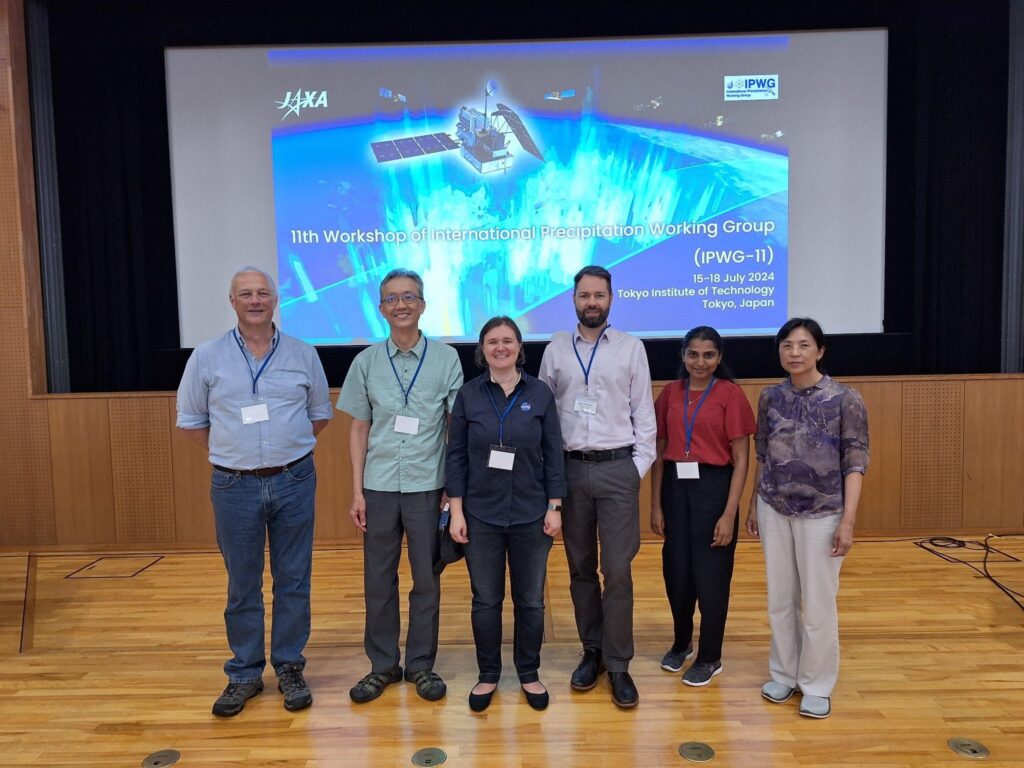
Last month, several ESSIC scientists traveled to Tokyo, Japan for the 11th Workshop of the International Precipitation Working Group (IPWG-11). The IPWG, a permanent working group of the Coordination Group for Meteorological Satellites (CGMS), is co-sponsored by CGMS and the World Meteorological Organization (WMO) and focuses the scientific community on operational and research satellite-based quantitative precipitation measurement issues and challenges. The Working Group meets biennially to discuss the current state of the field and set the goals in precipitation observation and analyses which are to be communicated to the agencies, stakeholders, and users worldwide. After the conference, the group also attended the 10th anniversary symposium for the Global Precipitation Measurement (GPM) mission.
Christopher Kidd, Kwo-Sen Kuo, Veljko Petkovic, Lisa Milani, and Malarvizhi Arulraj all presented at the conference:
- Arulraj presented, “Unraveling the Impact of Multi-Layered Precipitation Systems in Satellite-based Quantitative Precipitation Estimates”
- Milani presented, “Global Snowfall as Revealed by Satellite Precipitation Products”
- Petkovic presented, “Towards Understanding the Uncertainties of PMW-derived Precipitation Regime Trends”
- Kidd chaired “Cubesat/Smallsat and Data Assimilation” session and a working group focusing on “CubeSat/SmallSat”. He also presented on topic of “Precipitation retrievals from passive microwave cubesat and smallsat sensors”
- Kuo presented “Deriving Hydrometeor Mass from Images with Machine Learning” and “Progress of MIDAS and Challenges”.
Kidd also provided the opening presentation for the IPWG11 training course, “Introduction of precipitation-related satellite missions” alongside Joe Turk (JPL/Caltech), in addition to sponsoring the student poster prizes (one first prize and two highly commended prizes).
The next meeting is set for 2026.





